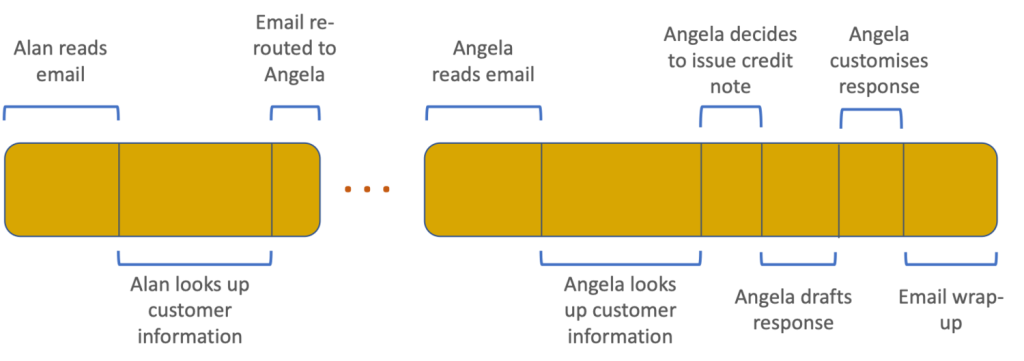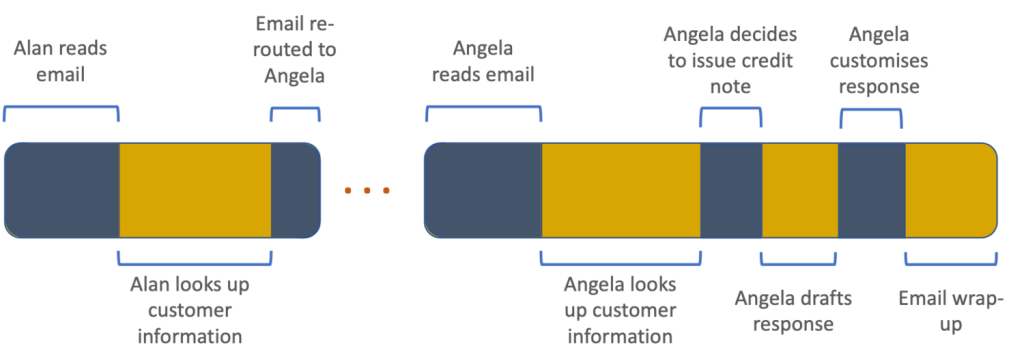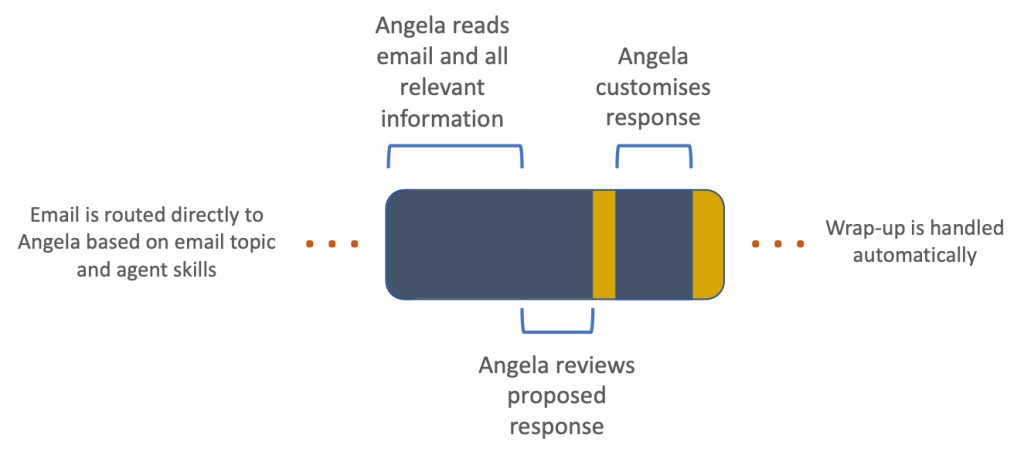Spotlight What Matters Most in Your Customer Conversations
Spotlight Summaries are here to shine a light on key trends in your conversations. This new feature analyses multiple interactions
The role of a customer support agent What does it mean these days to be a customer support agent? It is a role that is challenging to do well, and can be disastrous for your company when done poorly. Common perception would have you believe that customer care agents spend hour after hour processing the…

What does it mean these days to be a customer support agent? It is a role that is challenging to do well, and can be disastrous for your company when done poorly. Common perception would have you believe that customer care agents spend hour after hour processing the same queries over and over again. However, when you actually spend time working alongside a customer care team, you will notice a few consistent features:
Simple queries are few and far between: Ever since there has been customer support teams, there have been initiatives to reduce the volume of contacts, usually by allowing customers to self-serve. Most companies have invested heavily over the past ten years in self-service portals, web-sites, mobile apps, and, more recently, chatbots, with the ubiquitous business case of deflecting contacts. As a result of these investments, it is typically already possible for end-customers to solve most straightforward tasks and queries themselves. Sitting beside a customer support agent, you almost certainly won’t see any simple queries like “What are your opening hours?”, or “What is my current account balance?”. You will, however, find queries like “I sent an order of books through on the 19th, but then cancelled it on the 20th, the next day I resent the order, but now the address is wrong and I need to change it to reduce the postage costs. I also accidentally put in 5 books too many, can you amend this?”.
There is pressure to handle queries in a timely manner: Average Handling Time (AHT) is measured in almost all customer support organisations. Even in companies with a strong customer focus, keeping AHT in check is important. Many customer care teams have regular reviews with agents to reduce overall handling times.
There is pressure to handle queries with a high degree of quality: Balancing the need for low AHTs, is the need to resolve queries to the satisfaction of the customer. More and more companies now place a greater emphasis on high-quality, as opposed to quick, responses. Even in very cost-focussed customer support organisations, poor quality responses usually results in lower first-contact resolution (FCR) rates which further increase costs.
This is covered more extensively in other blog posts, but the question of agent value for your organisation can be answered in a number of ways.
At a high-level, the role of a customer care agent is much the same as that of a web-site, portal, app or chat-bot: to assist customers in achieving their goals or in resolving their issues. But, of course, human customer care agents do much more than that. They make decisions in real-time dealing with complex issues that are infeasible, or impossible, for computer systems to handle. They display social and emotional intelligence (displaying empathy, sympathy, humour etc.) to interact with customers in a nuanced way that is far, far beyond the current capabilities of the most advanced AI systems that exist today (and potentially will ever exist). They also use those same social and emotional intelligences to promote brand values whether they are working in a fun-loving start-up, a nurturing health insurance company, or a serious accountancy firm.
In short, customer care agents add the most value to your organisation when they are making complex decisions or utilising their social and emotional intelligence to deal with customers. It is no coincidence that these attributes are extremely difficult for computer systems to emulate or display.
Let’s look at an example of how customer service agents spend their time, and look at the areas where they are demonstrating the most value.
A Customer Complaint: Alan is a customer support agent for Hotel-o-rama inc., a leading hotel room aggregator. Catherine recently booked a room for two nights at a cost of €120 per night through Hotel-o-rama as she was attending her daughter’s graduation from college. Unfortunately, when she turned up to the hotel they had no record of her booking. What’s more, the hotel did not have any availability that night, and Catherine had to find another hotel across town, causing her to miss a celebration dinner with her daughter. Catherine has used Hotel-o-rama multiple times before, but she is naturally annoyed at this service and after her trip wrote an email to complain.
Alan receives Catherine’s email and begins to process it. He reads the email and looks up the information regarding Catherine’s booking in the booking engine. He can see that a system error has caused the issue. While the standard protocol in cases such as this are to issue a refund, Alan feels that it would be fair to issue Catherine with additional credit to compensate her. Alan is a junior member of the Hotel-o-rama customer care team and is not authorised to issue additional credit to customers. Alan sees that his team-lead Angela is at her desk and transfers the email to her queue.
A few minutes later, Angela receives the email and processes it. Angela also looks up the customer’s details and confirms that this is a system issue. Angela decides to provide a more-generous than usual credit on Catherine’s account. In addition to apologising for the inconvenience, Angela notes that “The additional credit applied should be enough credit for you to book a hotel for a night away for you and your daughter to celebrate her graduation.” on her response. Angela also looks up a number of well-respected hotels as suggestions where Catherine could redeem her credit.
Angela then wraps up the email by logging it into Hotel-o-rama’s CRM system, adding a disposition code of ‘Complaint – missing booking’ and a note describing the issue and the resolution.
The total timeline of this ticket can be seen in the diagram below:

Now, let’s examine the times during the processing of this query where Alan and Angela are adding the most value; the times where they are making decisions and displaying social intelligence. These times are shaded blue in the diagram below.

As Alan is reading the email, a portion of the reading time is used to understand the emotional state of Catherine the customer. Alan then looks up customer information from multiple systems to verify what actually happened. At this point in time, Alan makes the decision to raise the issue with a more senior member of staff. Angela also uses social intelligence to understand the likely emotional state of Catherine, again looks up the information in systems to verify the sequence of events. Angela then decides to issue a generous credit based on her understanding of the customer’s situation and emotional state, realising that the trip was of particular significance due to a graduation taking place. After drafting an initial standard response, Angela further personalises it by checking for well-respected hotels that she thinks would suit Catherine and her daughter. Finally, Angela wraps up the email.
Throughout these steps, note the amount of time that the customer care agent spent performing tasks that are not adding significant value to the organisation. Agent-assistance can help reduce or remove these times. Well-created agent assistant systems ensure that human agents spend the majority of their time on the highest value tasks possible, significantly reducing their time spent on mundane, repetitive, and automatable tasks that are better suited to machine substitution. Agent assistance will minimise the parts of the query processing where human agents are performing tasks that do not add value to the organisation, and ensure that agents have all the information they need to make complex decisions and understand customer issues.
For example, agent-assistance systems should prevent both Alan and Angela from having to look up customer details while they are processing an email, understanding the customer issue to such a degree that it already has all of the information ready for Alan and Angela to make a decision on what to do. The agent assistant could include information such as the customer’s account history, previous attempted bookings and the reimbursement policy. Additionally, rather than Angela writing a first version of a response, agent-assistance software should draft an initial response for Angela to review and modify if necessary. Similarly, the wrap-up of the email should be completely automated to prevent Angela from having to copy / paste information from one system into another.
Stepping back a little, a contact-centre wide agent-assistance system should actually completely remove Alan’s participation in this query as it should determine that this complaint query should only be handled by a senior agent and route it directly to Angela. In the case of this particular query, agent-assistance could reduce the overall processing time by 80%, or could leave Angela with even more time to personalise a response and turn a negative situation into a customer for life.
An idealised agent assisted timeline can be seen below. While it is unrealistic to expect all manual tasks to be removed, the vast majority of the customer care agent’s time is spent on tasks that require complex decision making or some form of social intelligence.

Not only does this approach significantly reduce the time spent in handling a query, it also frees up a customer care team to think more carefully about how to respond to a customer, and potentially also to search for ways to delight customers in their handling of the query.
Agent-assistance removes much of the mundane and repetitive tasks that agents don’t like performing and leads to happier agents with faster and more accurate responses to customers. Agent assistance can also lead to reduced training times, increased use of best practice wording and responses, reduced chance of error and overall happier agents.
Spotlight Summaries are here to shine a light on key trends in your conversations. This new feature analyses multiple interactions
We’ve just added confusion detection to our emotion analysis tools. Now, you can easily spot when customers are confused, allowing
Discover how EdgeTier’s latest AI-powered updates can optimise your contact centre, including anomaly detection summaries, agent QA, and custom charts.
"EdgeTier is really shining when it comes to responsible gambling. We can proactively track critical issues and take actions, reducing human error."
"We now have highly detailed understanding of agent performance, not just on key agent metrics, but also on how customers react to our agents and the emotions of our customers feel when talking to our team."
"It has reduced the time for the quality assurance process as it provides clear data and a very robust direction on where to look and what matters the most."



Let us help your company go from reactive to proactive customer support.
Unlock AI Insights